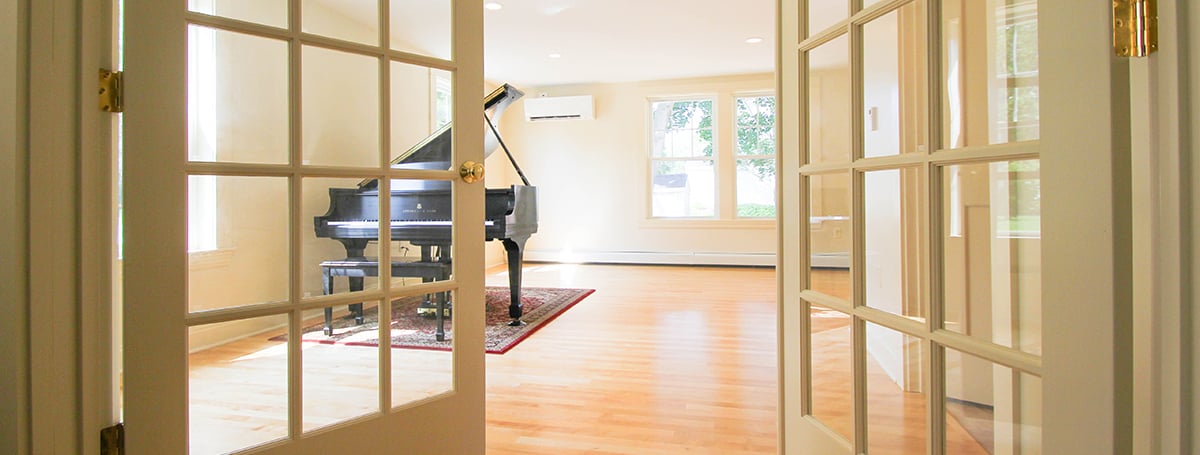
Congratulations on deciding to buy your first piano!
This can be an exciting—but overwhelming—process. Luckily, you’ve come to the right place! At Pianote, we want everyone to start their piano journey strong, so here’s a guide to get you started.
We’ll discuss what you should consider before buying a piano, the types of pianos on the market today, how they differ, and how to choose a piano that is right for you.
Table of Contents
Chapter 1: Before You Buy
1.1 A Brief History of the Piano
1.2 How Pianos Work
1.3 What to Consider
Chapter 2: How to Buy an Acoustic Piano
2.1 Upright vs. Grand Pianos
2.2 Cost of Acoustic Pianos
2.3 New vs. Used
Chapter 3: How to Buy a Digital Piano
3.1 Types of Digital Pianos
3.2 What to Look For in a Digital Piano
3.3 Hybrid Pianos
Chapter 4: Best Beginner Keyboards and Pianos
Chapter 5: Piano Accessories & Maintenance
5.1 Piano Accessories
5.2 Piano Maintenance and Tuning
Chapter 6: FAQ
Are acoustic pianos really better?
How do I know if a piano is good if I’m a beginner?
How do I buy a piano for a child?
Are old/used pianos worth it?
How do I move a piano?
How long do pianos last?
What’s a piano’s resale value? Are pianos good investments?
How can I resell an old piano?
How much should I spend on a piano?
Further Resources
*Note: This article contains affiliate links, which means we might earn a small commission from the product seller if you make a purchase. For more info, check out our privacy page.

> A Complete History of the Piano
Welcome to the piano. By going on this journey, you’re joining a tradition that’s been going on for over 300 years.
Before you learn how to buy the best piano for you, it may help to understand the historical context of this magnificent instrument.
The harpsichord is different from other keyboard instruments because its strings are plucked rather than hammered. With keys that resemble unweighted buttons, it has a small dynamic range. The triangular shape of the harpsichord comes from it being descended from harps laid down. We still see this shape in grand pianos today!
The clavichord dates back to the late Middle Ages. It’s very compact and rather quiet. But it more closely resembles the piano because the strings are hammered, although some notes can’t be played at the same time.
In the 1700s, piano engineering took a huge step forward thanks to Bartholomew Cristofori. Cristofori single-handedly designed the pianoforte (literally, “soft-loud”) which is the precursor to the modern piano. Unlike previous keyboard instruments, the pianoforte has a nuanced, dynamic range based on how much pressure a pianist puts on the keys. Escapement was another innovation — a mechanism that keeps strings from vibrating when not in use.
Piano engineering would take another big step in the 1800s with John Broadwood’s pianos. Beethoven famously abused his pianos out of frustration because he was hard of hearing. But when he gained access to the Broadwood piano, his world changed. In fact, Beethoven’s dynamic and passionate composition style may have come about thanks to the greater expressive range of the Broadwood.
The pianos of today are a culmination of hundreds of years of human ingenuity. Pianos are one of few instruments capable of playing melody and harmony at once. And the sound of an acoustic piano is strong enough to stand out against an entire orchestra during a concerto.
The sophistication of acoustic pianos is probably why, until very recently, learning piano on a digital keyboard was frowned upon. But digital pianos have come a very long way in the past twenty years. Later in this article, we’ll see just how far they’ve come along and how they stack up against — even rival — their acoustic counterparts.
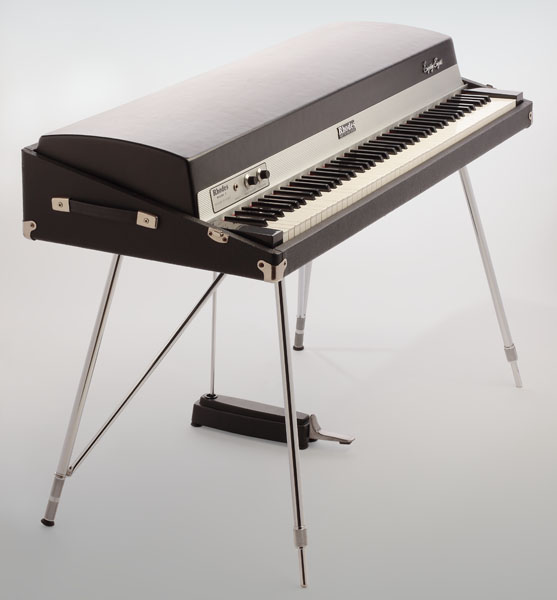
Understanding how pianos work — both acoustics and digitals — can help you navigate the (often overwhelming) piano market. Know what salespeople mean when they say things like “una corda” and “semi-weighted key action.”
The modern acoustic piano is a sophisticated machine with over 12,000 moving parts. It’s easier to understand the mechanisms by watching a video, but we’ll summarize the key points here.
What a key does when you press it is called action. Know this word well — it’ll come up a lot when you shop for a piano, acoustic or digital. In a nutshell, it works like this:
A digital piano interprets the “input” of your hands to produce an output (sound) made from sampling or modeling. Today, digital pianos are very sophisticated at interpreting what fingers do, and they can recreate things like dynamics and expression very well.
This is because digital pianos have gotten very good at designing key actions that mimic those of acoustic pianos. That being said, how digital pianos work vary widely. Synthesizers with very simple actions can feel like pressing buttons on a game controller. Meanwhile, high-end performance keyboards can feel like you’re playing on a concert grand.
Here’s some useful vocabulary to know about digital piano action:
Hybrid pianos combine the best of both worlds. They often use acoustic piano action with a digital tone engine. The Kawai NV5 even uses a real spruce soundboard.
These instruments aren’t cheap, but they’re an excellent choice for experienced musicians who require the nuanced power of an acoustic piano but don’t have the space or privacy to house a concert grand. Skip to this section if you’re interested in hybrid pianos.
Everyone has different needs, so how do you know whether the piano of your dreams is right for you? Here are some things to think about before you buy your first piano:
Type of music you want to play. Classical and jazz pianists benefit from training with acoustic actions, especially the action offered by a grand piano, which uses gravity to return hammers to rest. Meanwhile, composers and music producers require the connectivity and features of a digital piano. Gigging musicians who accompany touring bands will prefer a stage piano that combines portability and functionality.

Commitment and budget. Let’s face it, pianos are expensive. If you’ve never played piano before and are unsure how much you’ll like it, it makes sense to invest in a cheaper, entry-level instrument. Piano makers manufacture instruments for people across a large spectrum of budgets, which can be confusing. For more information about pricing, take a look at this article that outlines piano prices in different tiers and brands.

Space (and the people you live with). Acoustic pianos are very large, especially grand pianos, which are also oddly-shaped. If space is a concern, don’t discount digital pianos or keyboard. Digital piano technology has improved exponentially in recent years and even experienced, discerning pianists love digitals like the Nord Piano 5. Headphone compatibility is especially valuable to folks with housemates!

Take some time to consider all these factors and jot them down before you head to the music store. It’s also a good idea to measure out the space you intend to place your instrument and bring those numbers to the store.
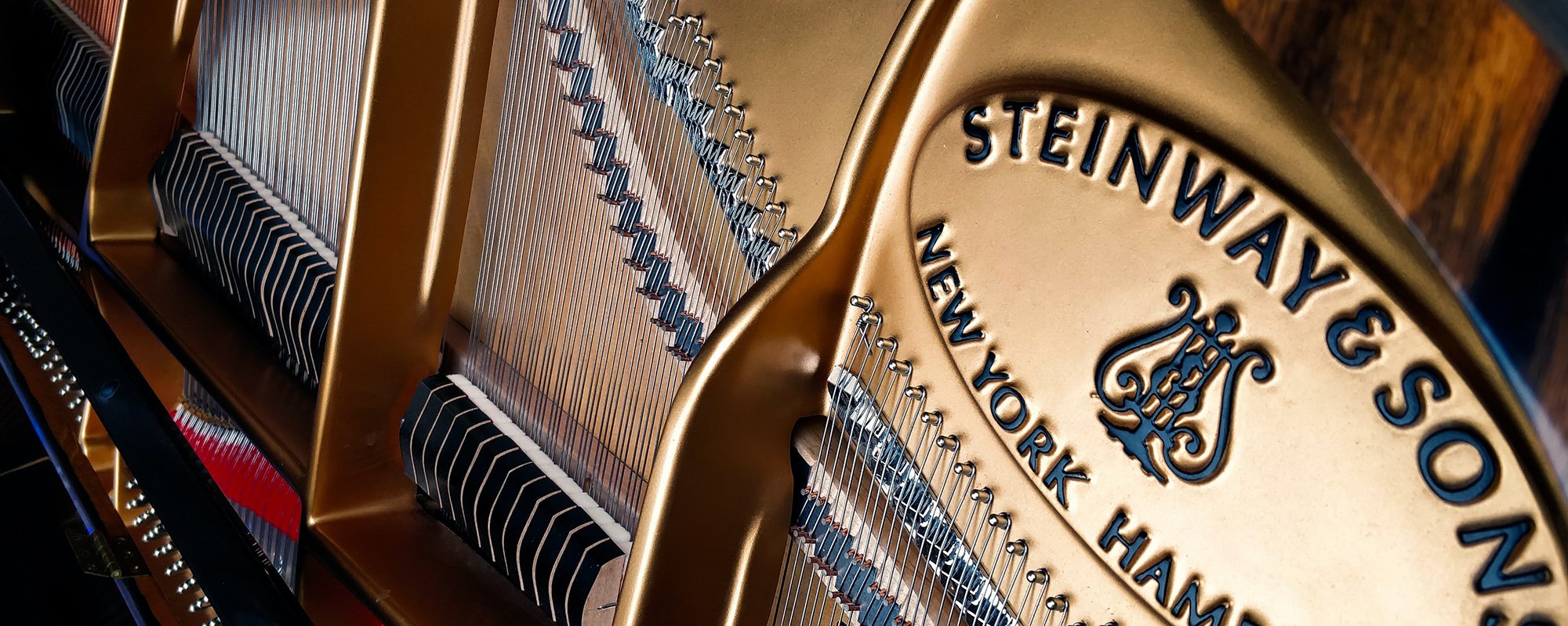
You’ve probably encountered several upright pianos in your life, whether in your childhood home, at school, at church, or at a family friend’s house. For generations, upright pianos like the Yamaha U1 were familiar residents of family homes.
On the other hand, grand pianos are some of the most elegant and beautiful things you can place in a home. They’re also very large, very loud, and very expensive.
So, when is it a good time to get an upright, a grand, or neither? Let’s compare their differences in detail.
Key action. In grand pianos, the hammer returns to its original position using gravity because the strings are laid horizontally. Upright pianos require springs to return hammers to rest. This means it’s easier to play fast and repetitive notes on a grand piano than it is on an upright. Here’s a demonstration by Yamaha:
Pedals. Grand pianos typically have three pedals: the una corda (left), the sostenuto (middle), and the sustain pedal (right). Upright pianos usually lack a sostenuto pedal and have a lockable silent practice pedal instead that significantly reduces volume. Sostenuto pedals are rarely used, even in advanced music, so if you’re a beginner, don’t worry too much about lacking one.
Sound quality. Experts tend to agree that grand pianos have superior sound quality due to their size and shape. In a grand piano, sound leaves the piano from the top and bottom of the instrument. They’re also larger. These features give grand pianos superior tone and resonance. Grand pianos also have the same shape as other resonant instruments like violins and guitars. Box-shaped upright pianos, on the other hand, don’t conduct sound as well.
If you’re a beginner, start with an upright piano if you want to buy acoustic. An upright piano is more affordable, takes up less space, and its acoustic features should be enough to help you develop your technique.
Experienced pianists and performers can benefit from the key action of grand pianos. If you plan to play on other people’s pianos (such as in a concert hall), it would make sense to practice on a piano as similar to that as possible.
> What is the cost of a piano? (Acoustic & Digital)
The cost of acoustic pianos is sometimes difficult to find. Price can be influenced by factors like brand, wood finish, manufacturing process, and materials. For a more in-depth discussion on how much pianos cost, check out our Cost of a Piano, Explained article.
In general, expect to spend more than $5,000 USD for an entry-level, brand new acoustic piano like the Kawai K-15. Here are other examples of acoustic piano MSRPs:
Buying a used piano can save you a lot of money and net you a high-quality piano. Plus, recycling is good for the planet!
But buying used pianos can be intimidating. And it’ll take work. The best way to go about this is to shop with a professional or at least someone who’s experienced with pianos.
You can also visit your local music store and ask about trade-ins. Sometimes, people trade-in old pianos when they upgrade to a better model. These pianos should have been inspected by the store. If you’re not sure how far you’ll go with piano, ask your store about renting or rent-to-own programs.
Some tips to get you started:
Ask questions like how often the piano was played, how often it was tuned, and how the original owners cared for the piano. You may even want to know the general environment the piano was housed in (ie. did it live in a humid area?).
It’s also best to open up a piano and inspect the insides. Ideally, you’d have a professional do this, but if you’re keen on DIY-ing it, Piano Buyer has a very detailed step-by-step guide on how to do this yourself.
Buying an acoustic piano is an expensive and time-consuming task. It can also be rewarding. But don’t forget that today, we have a vast array of digital pianos to choose from too.
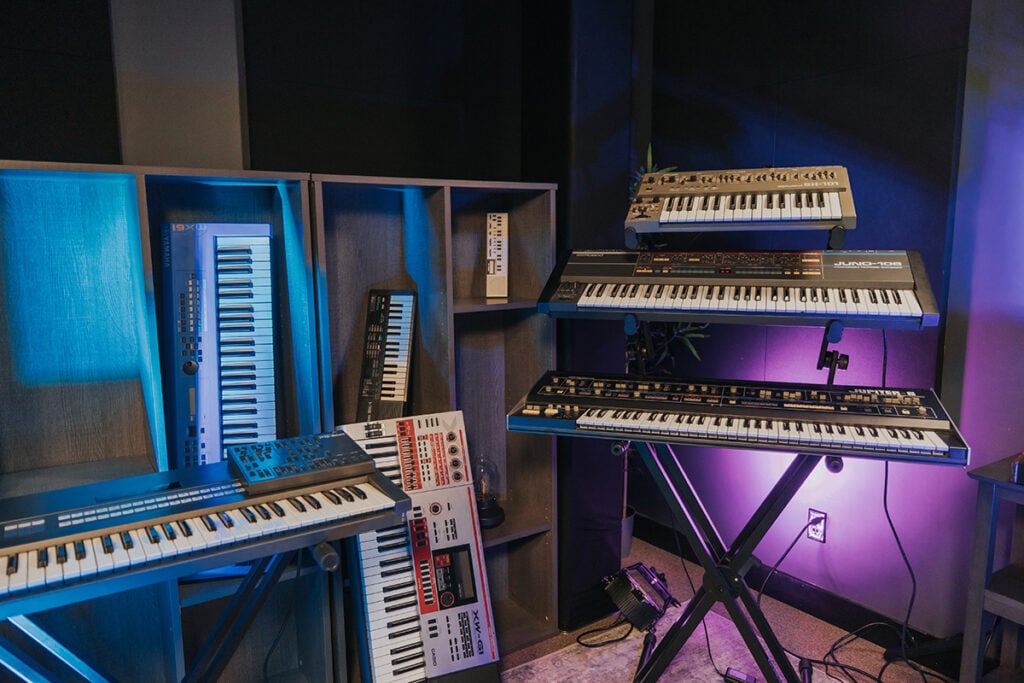
Not too long ago, learning on anything but an acoustic piano was frowned upon. Not anymore. Today’s digital pianos and keyboards are very sophisticated instruments with incredible tone quality and realistic key action. They’re also portable, packed with features, and make it easy to record and practice quietly.
The digital piano market is quite large and can feel overwhelming. Here are a few broad, unofficial categories of digital pianos:
These instruments aren’t designed to be portable and they often mimic an acoustic upright’s cabinetry and finish. These pianos are ideal for beginners, families, and hobbyists who want a piano that fits in nicely with their home. They’re typically smaller than an acoustic upright, making them more apartment-friendly, and they come in a variety of price points.
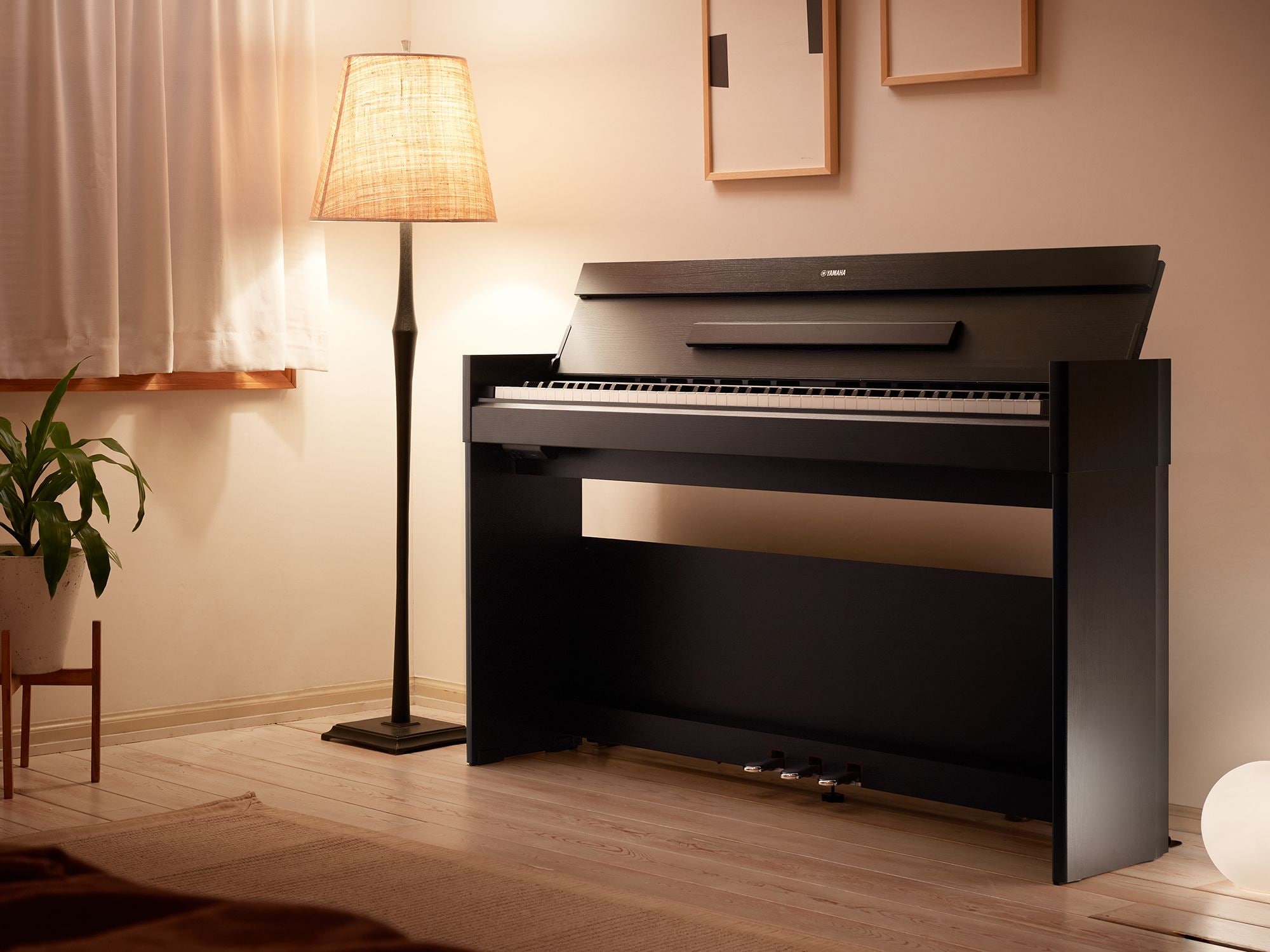
These pianos are sometimes called “slab” keyboards. They are compact and portable, but you can add an optional stand and attach pedals if you want to treat yours like a home piano. These range in quality from entry-level models like Roland’s GO:KEYS to instruments geared for advanced players like the Yamaha P-515.
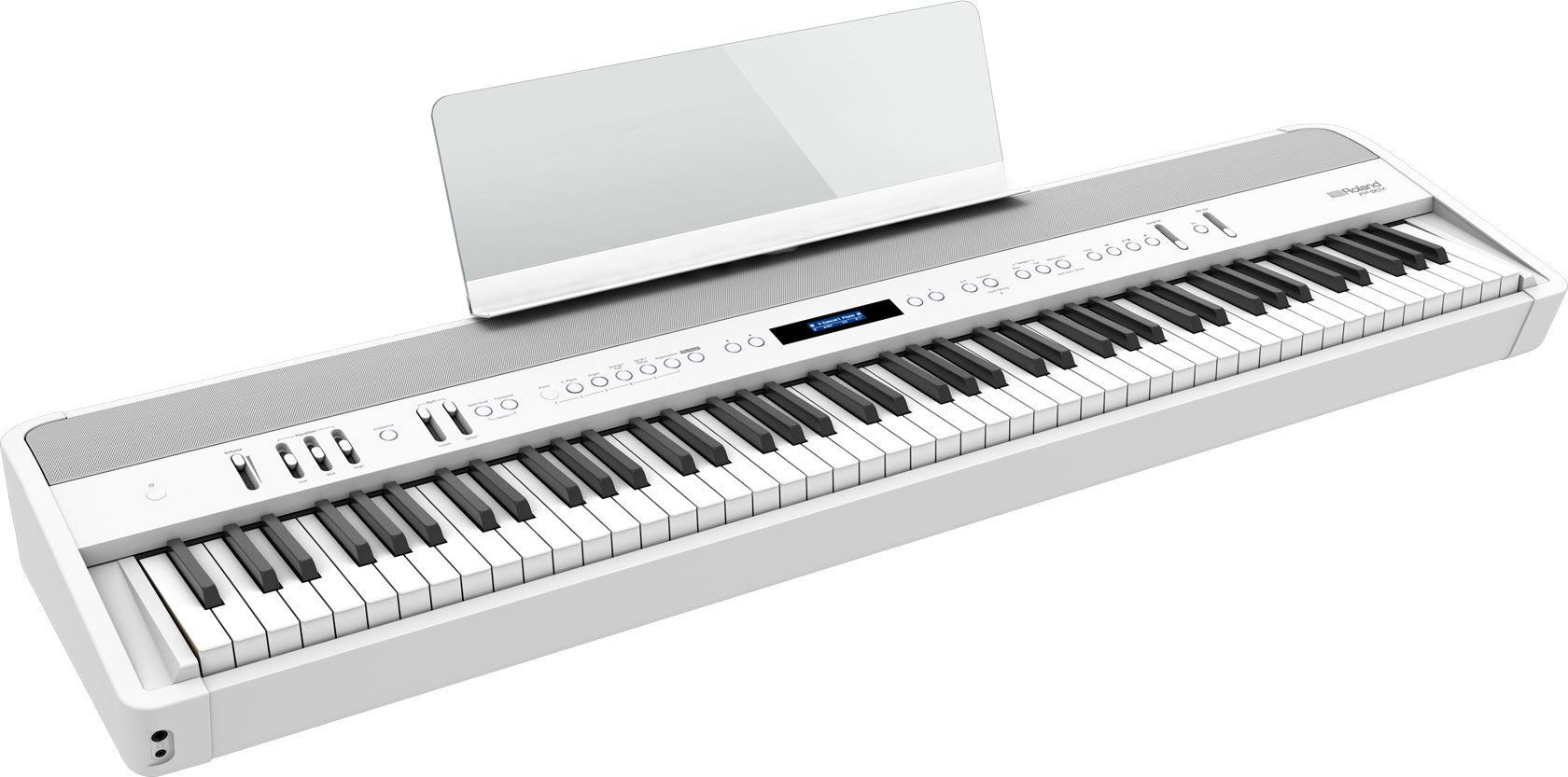
Stage pianos are some of the most advanced instruments. Made for pro touring musicians, these instruments are jam-packed with features that a keyboardist will need on stage while they’re performing with a band. These pianos often have excellent action too. Nord pianos are popular instruments in this category with their iconic red casing and the company manufactures instruments specifically for pro musicians.

These can be perceived as completely different instruments. Synthesizers, workstations, and MIDI keyboards are designed for composers and music producers. They have features like MIDI connection, different tones, and special effects. Key action is usually not a priority here, though some synthesizers do offer weighted keys.

So, what should you look for in a digital piano? Well, this depends a lot on your particular needs. But for most beginners who want to develop a good foundation in piano technique, we have a few tips.
Try your best to get 88 keys. This is the standard number of keys on a piano. Having 88 keys at your disposal will allow you to play any song on the piano without running out of notes. And while you may think you don’t need all 88 notes as a beginner, you’ll quickly get to a point of needing all 88 keys.
When you’re first starting out, it’s vital to get authentic, weighted, touch-sensitive keys. That’s because touch is a skill you want to develop from your first day. Knowing how to manipulate the keys to produce nuanced, dynamic sound is a fundamental skill that you don’t want to lose out on by learning on a sub-par instrument.
As we mentioned before, there are several types of digital piano key action. Here’s a review:
“Tones” refers to the unique sounds a digital keyboard is capable of making. Common examples include grand piano, electric piano, harpsichord, strings, choral, and drum kits.
“Polyphony” (poly = many; phony = voices) refers to how many notes can be played at the same time. While there are only 88 keys on a keyboard, things like backing tracks, layering, and other effects may count as a voice.
MIDI (Musical Instrument Digital Interface) is a universal “language” that instruments use to “speak” with each other. It takes information from an instrument you play — such as how hard you play and at what pitch — and relays this to other instruments or a computer. Most digital pianos and keyboards these days have built-in classic MIDI ports and/or USB MIDI ports. With a USB port, you can plug a keyboard directly into a computer and start playing. With older MIDI ports, you’ll need an interface between the instrument and the computer to relay the message.
MIDI capability is something you’d want to look for if you want to get into music production or learning with an app.
Hybrid pianos are exactly what they sound like — they’re a hybrid between acoustic and digital pianos.
Hybrid pianos really are the best of both worlds. They often have features like headphone, MIDI connectivity, and different tones, while giving an authentic, acoustic experience. Some hybrid pianos even use real hammers and real soundboards.
So what’s the downside with hybrid pianos? Well, they’re pretty expensive — anywhere from $5,000 to $20,000. With this amount of money, you can buy a very good quality upright piano or even a baby grand.
Still, hybrid pianos are perfect for people who demand the tone and key action of an acoustic piano but also desire the convenience of headphones, recording, and a smaller instrument. Hybrid pianos tend to attract experienced musicians with space limitations.
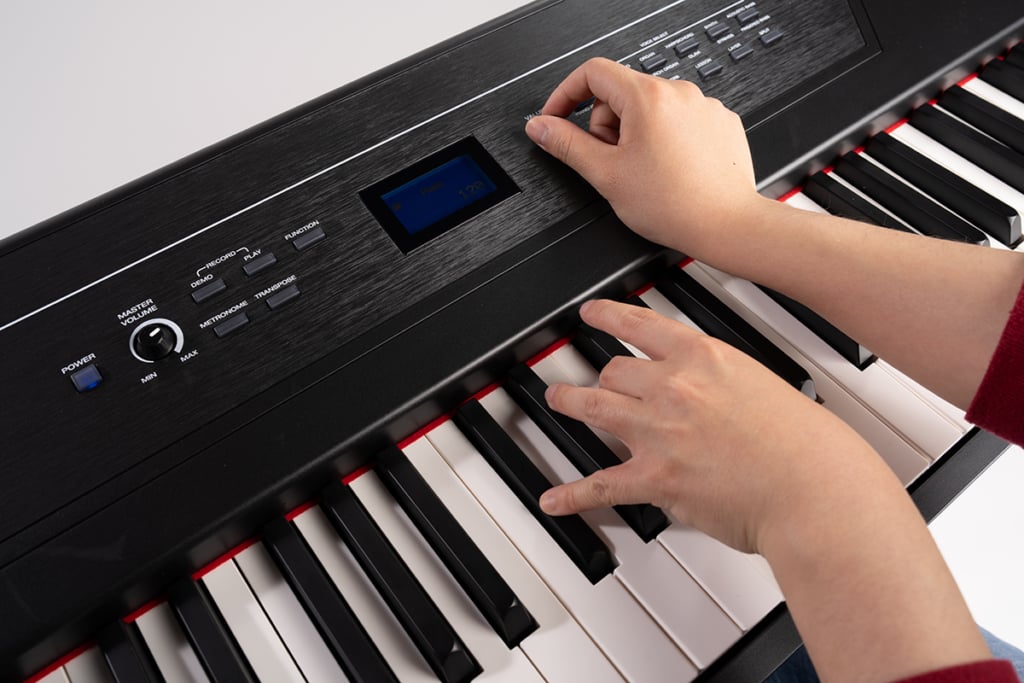
> The Most Popular Piano Brands
Are some piano brands better than others? Not necessarily. Are they different? Yes. In this section, we’ll discuss whether the brand of your piano really matters.
Brands certainly sound different. Yamahas are often described as “bright” while Steinways are known for being “warm.” These differences appeal to different people, and there’s no right or wrong answer to which brand is better. The only thing that matters is what matters to YOU.
Some brands are more reputable than others in the sense that they’ve been in the business longer and have had more time to innovate. These days, you can find many cheap, mass-produced instruments from brands you’ve never heard of.
The prices of these instruments may be tempting — and if you’re not picky, they may be just what you need — but remember that you get what you pay for. On the other hand, here are some established, dependable brands to look out for as a beginner:
| Digital Pianos | Acoustic Pianos | Hybrid Pianos | Synthesizers |
|---|---|---|---|
| Yamaha | Yamaha | Yamaha | Moog |
| Roland | Kawai | Kawai | Korg |
| Casio | Hoffman, Zimmerman (by Bechstein) | Yamaha | |
| Nord | Essex, Boston (by Steinway) |
Need a little more guidance? Here are some pianos we’ve tried at Pianote that we like. Prices are the MSRP accurate at the publication of this article. And please double check whether pianos come with accessories such as stands, music rests, and pedals.
The Roland GO:KEYS is a compact and lightweight portable keyboard. It’s perfect for beginners just sussing out the piano or more experienced hobbyists who want a portable keyboard to toy with. You can also upgrade to the Roland GO:KEYS 5.

The Alesis Recital Pro is an extremely competitively priced full-size piano! It’s a great option for many beginners, but is quite basic so may leave pianists at the novice level and above a little wanting.
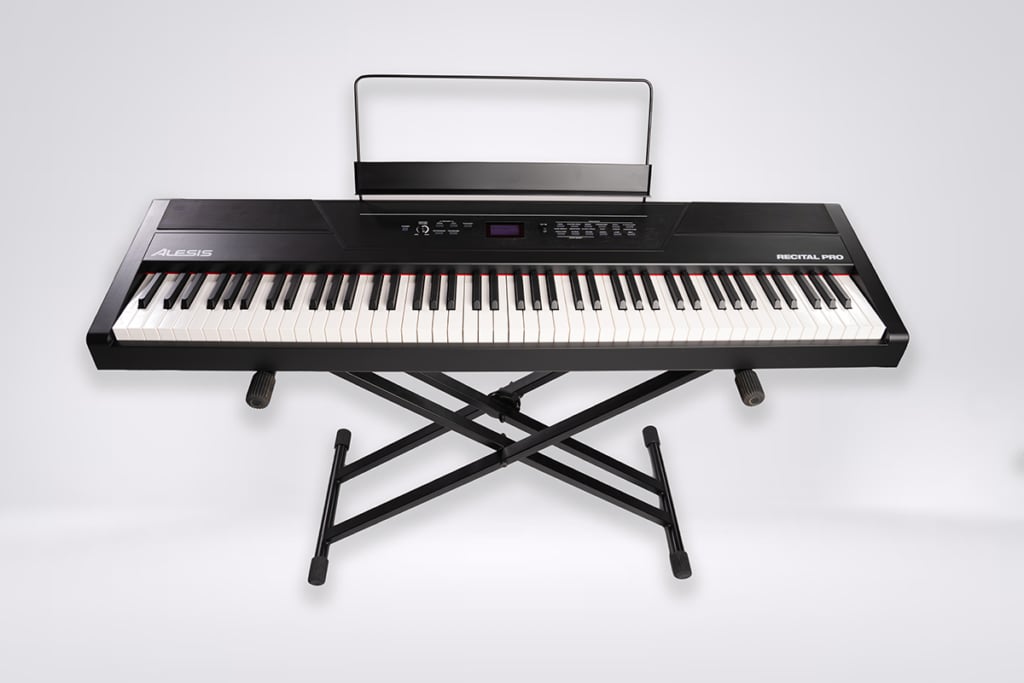
The Yamaha P125a is a full-size weighted keyboard with graded action, which means the higher notes feel lighter than the bass notes—just how it works on an acoustic piano. All in a sleek, lightweight design.

If you want to level up from the P125a, consider the P-515, which takes piano authenticity up a notch. It features samples from the Yamaha CFX and Bösendorfer Imperial pianos, both well-known and beloved concert grands. This piano also includes escapement and authentic, wood-feel keys.
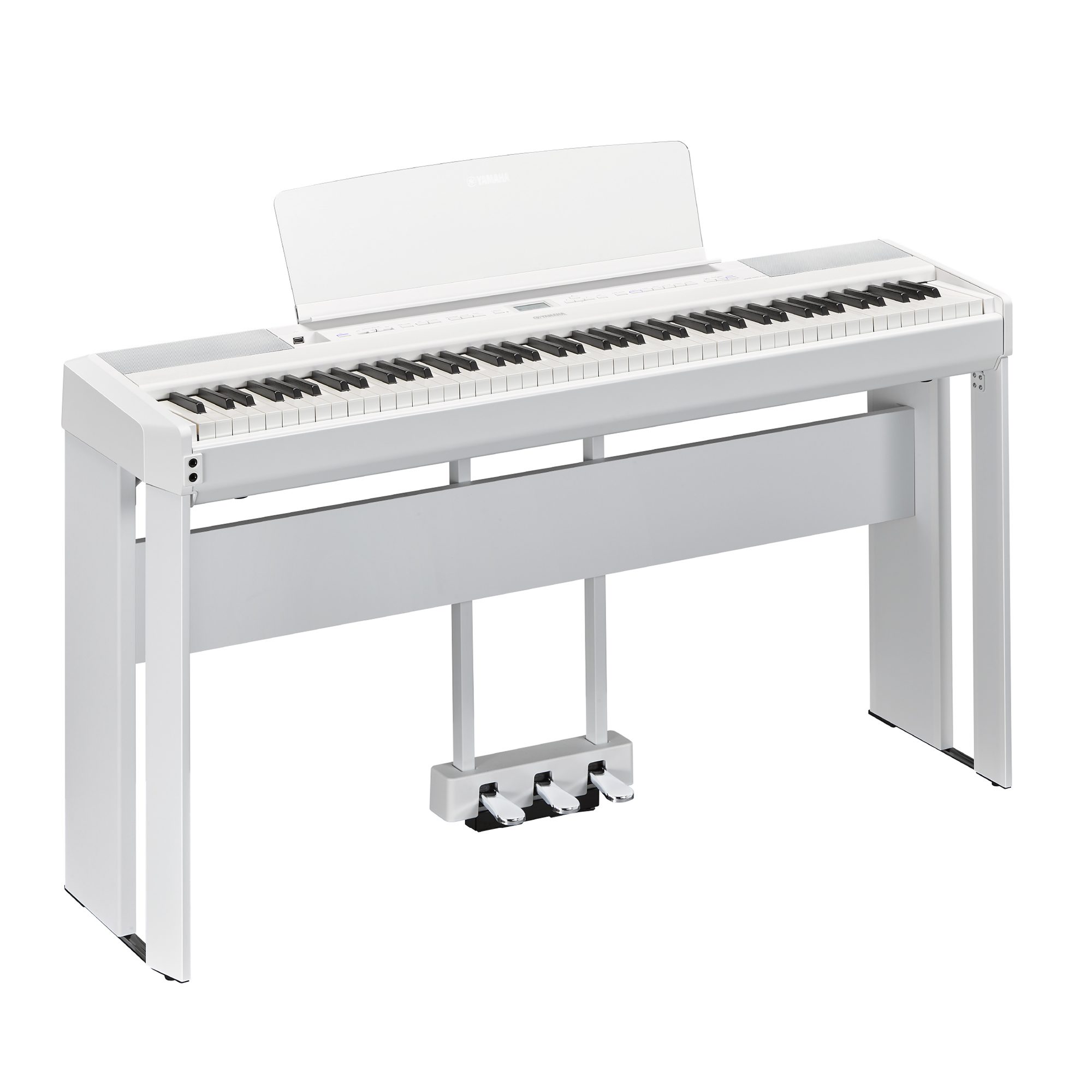
The white model of this keyboard is absolutely gorgeous. When Kaitlyn (a beginner) tried several pianos and was asked to pick one, she chose the FP90X without hesitation. She noted that the playing experience was “smooth” and the sound “full.” At a higher price point, the FP90X should satisfy both beginner and experienced pianists.
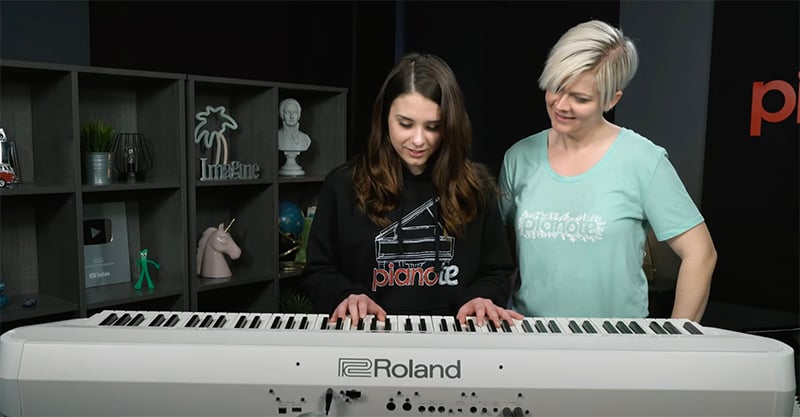
We haven’t reviewed specific upright acoustics, but the following are good models to explore:
The Yamaha U1 is a popular upright acoustic piano that you’ve probably seen in a childhood friend’s home. While it’s not Yamaha’s cheapest acoustic model (check out the B series if you’re interested in a lower-priced Yamaha acoustic), it’s a solid, dependable piano that is beloved by hobbyists and professionals alike. If you want to level up, choose the U3 or U5 pianos, which are larger in size.
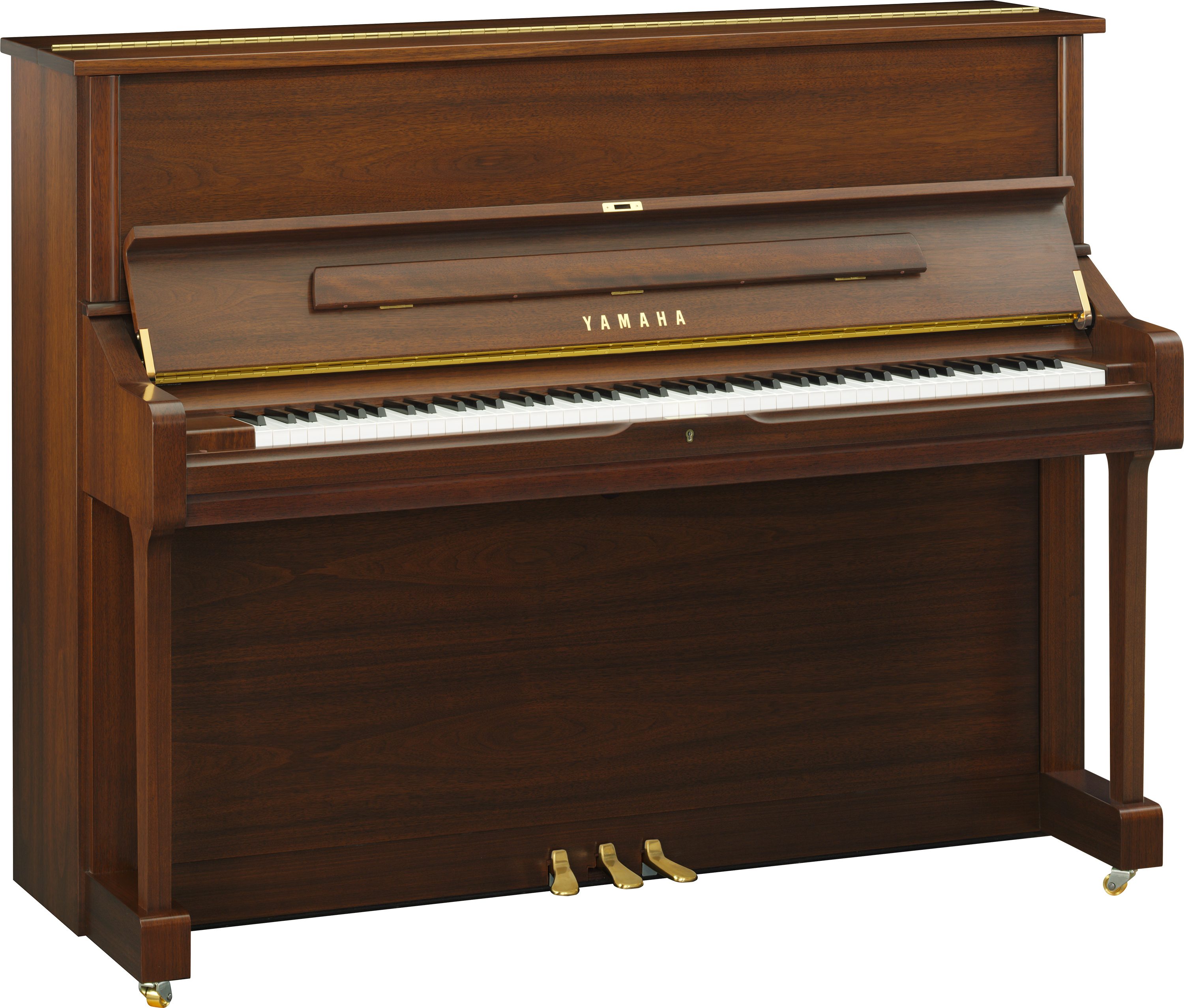
Kawai is another Japanese powerhouse that manufactures high quality acoustic pianos that are accessibly priced. Kawai is best known for its carbon fiber action; traditionally, piano action is made from wood but using carbon fiber makes the keys feel lighter. Some people perceive Kawai’s sound as “darker” than Yamaha’s.

Boston and Essex are brands in the Steinway & Sons family. Designed by Steinway, these instruments are more accessibly priced for the average consumer. Boston pianos are manufactured in Japan by Kawai and Essex pianos are manufactured in China by Pearl River.
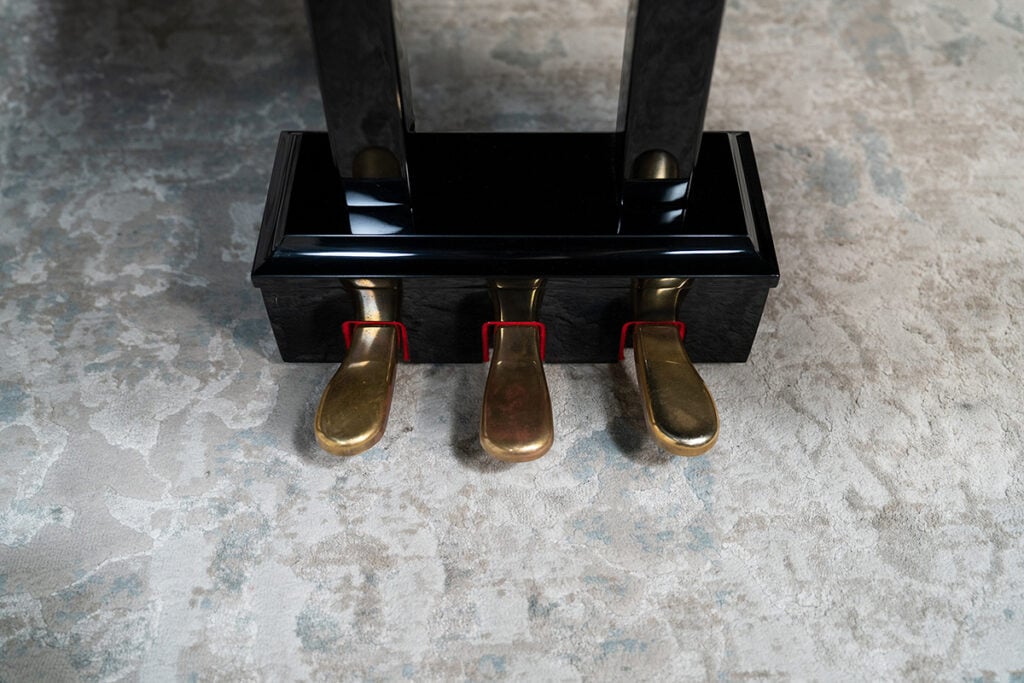
Most pianos are pretty self-contained. Beginners don’t absolutely need amplifiers, wires, or even music stands. Still, you may be interested in what accessories are available to augment your experience.
Some digital keyboards have built-in music stands, but if yours doesn’t, you’ll want to invest in a reliable, hardy stand. Seriously — invest in a good stand! As anyone who’s played in a school band can attest to, flimsy stands that flop over the moment you turn a page are no fun.

If you play on a slab or portable keyboard, you’ll also want to invest in a good stand to place it on. Again, make sure it’s not too wobbly. When you’re a beginner, you want to focus on your technique; avoid being bogged down by unreliable gear.
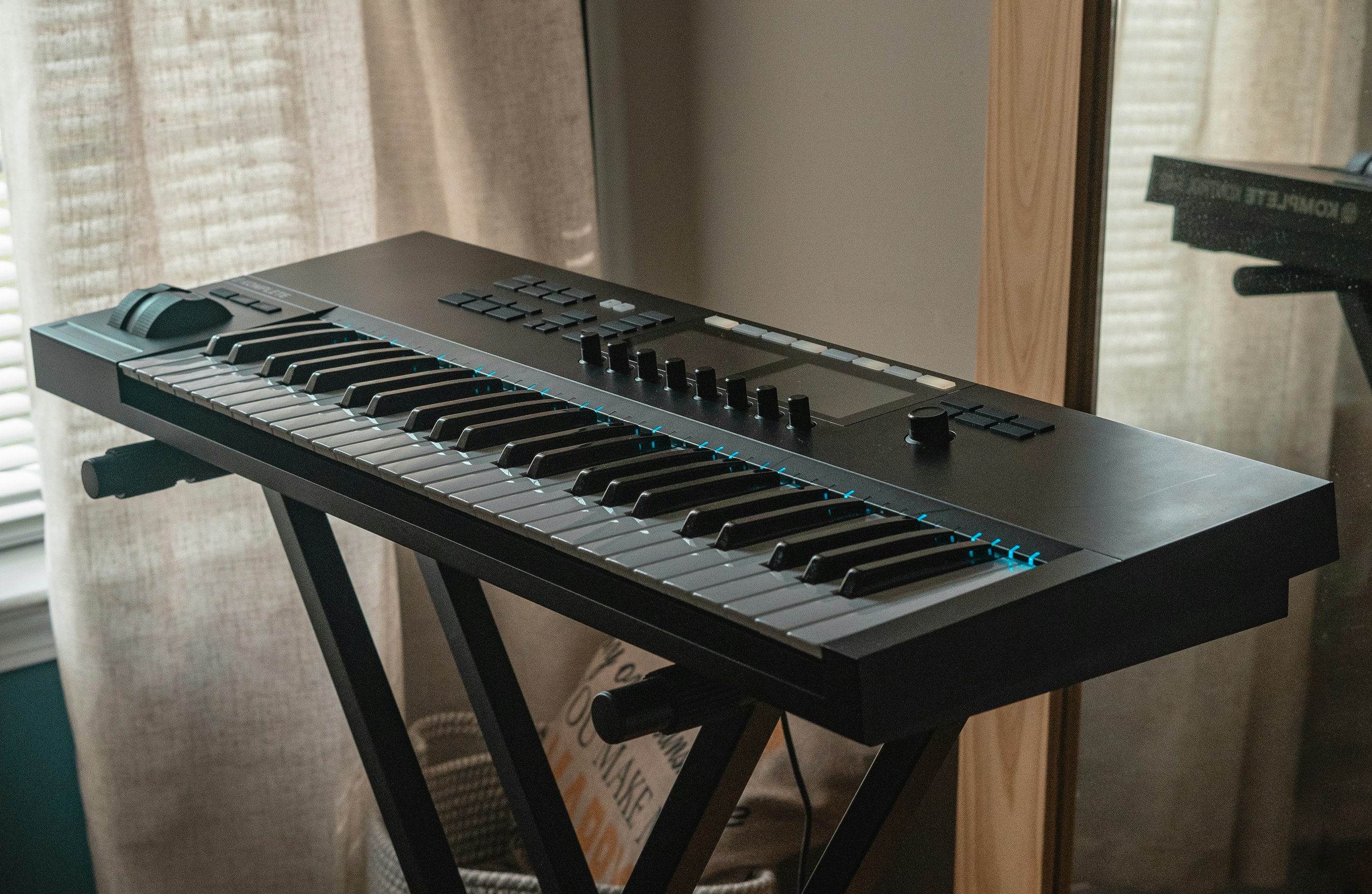
The sustain pedal creates the signature piano sound. If you play with a keyboard and don’t have one, sooner or later, you’ll want a sustain pedal. The sustain pedal can also make you sound better when you’re first learning a song! (Obligatory remark: some teachers frown upon using the pedal too much because it’s “cheating,” but in my opinion, if you’re just playing for fun, you might as well sound good!)
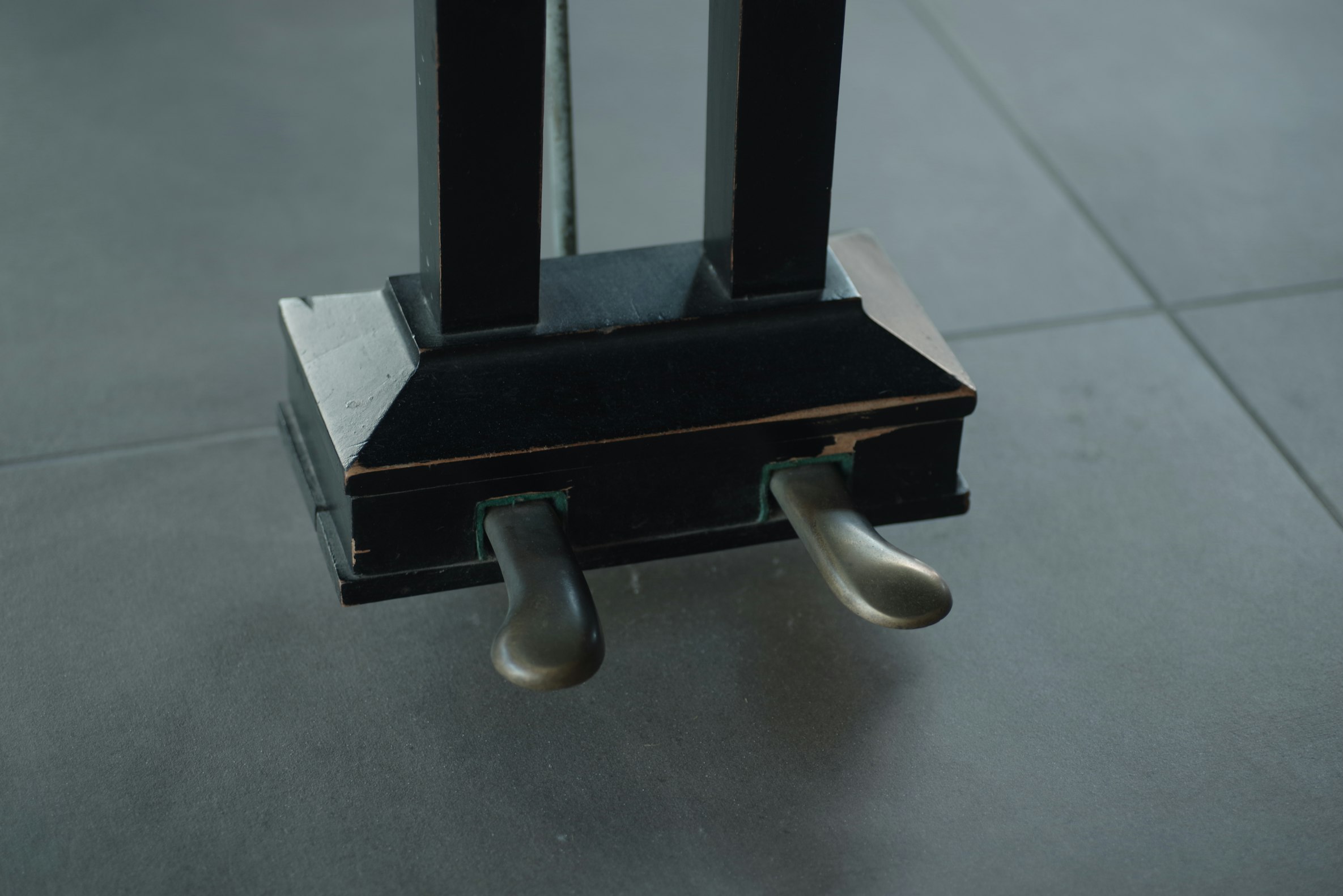
While you technically can play the piano sitting on anything, having a dedicated piano bench will significantly improve your experience. Once you advance a little, you’ll need a bench that can handle you moving around, tilting, and stretching your body. Some piano benches allow you to adjust the height too, so everyone from your 6’4″ uncle to your kid sister can play the same piano!

Most digital pianos come with a built-in metronome, but if you have an acoustic piano, you’ll want one. I know, students hate metronomes, but they do make you better! Today, there are metronome apps you can download for free and Google even has a free metronome tool if you search “metronome.”

If you plan to get into recording and you have the gear to do so, you may want to look into digital audio workstations (or DAWs). Music production is its own world with its own language. If you plan to get into production, prepare to do lots of research (and shopping!). Some DAWs like Audacity (free, open source) and Garageband (free for Mac) are very accessible and quite powerful. Professional quality software like Ableton and Logic Pro will cost more.
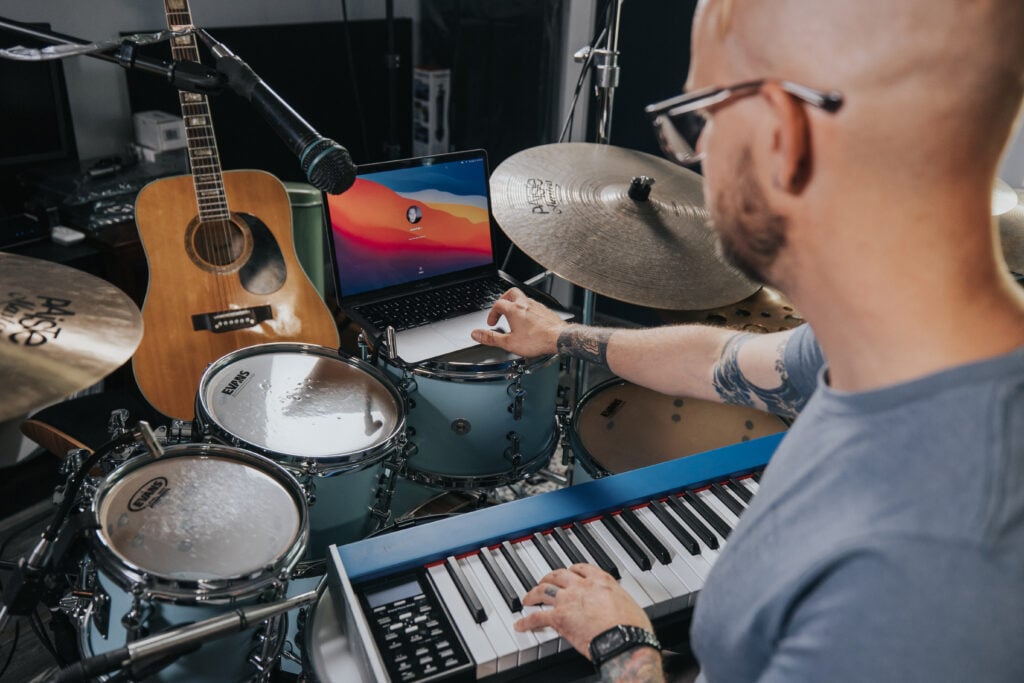
Want to write down your arrangements? Musescore (free!) and the free version of Sibelius can help you make music notation quickly, easily, and painlessly.
> Interview With a Piano Tuner
Digital pianos are pretty low-maintenance. They also never go out of tune! However, acoustic pianos require a little upkeep to maximize their lifespan.
Get your acoustic piano tuned by a pro. Pianos are complex (and often expensive!) machines, so you don’t want to risk harming your instrument with DIY.
Here’s a fascinating video on what goes into a piano tuning. Interestingly, tuners aren’t after a scientifically accurate tuning per se. Rather, because of the way our ears work, the tuner’s job is to create the impression that a piano is in tune.
Most sources I consulted recommend that acoustic pianos be tuned once every six months or twice a year. How often your piano should be tuned can depend on your local climate, and new pianos may require more frequent tunings in the first few years of their lives.
Here are some cleaning tips from two top piano manufacturers, Steinway & Sons and Yamaha:
Disinfecting. After Covid, it’s a smart idea to keep high-touch surfaces nice and clean, especially if you have many people and visitors using your piano. Steinway recommends hydrogen peroxide as a safe cleaning agent for piano keys, while Yamaha warns against using alcohol-based cleaners. Whichever you choose, wipe the piano dry when you’re done.
Polishing and finishing. Since different pianos have different finishes, consult with your seller on how to best care for your piano. Both Yamaha and Steinway seem to agree that if your piano can be cleaned with water and then wiped dry, stick to plain water.
General upkeep. An occasional, simple wipe-down with a dry, microfibre cloth — like the type used to clean glasses — should keep your piano in good condition. Also avoid placing objects on the piano; this can affect both the instrument’s finish and its sound.

Are acoustic pianos really better?
How do I know if a piano is good if I’m a beginner?
How do I buy a piano for a child?
Are old/used pianos worth it?
How do I move a piano?
How long do pianos last?
What’s a piano’s resale value? Are pianos good investments?
How can I resell an old piano?
How much should I spend on a piano?
20+ years ago? Yes. Today? Not really.
There will always be piano purists who think acoustic pianos are superior, period. Indeed, digital pianos will never match an acoustic’s sound because they’re not acoustic!
However, digital pianos are giving acoustics a real run for their money. Today, they feature authentic feels, great sound, and are compact and packed with features.
So, while experienced and professional pianists should definitely consider an acoustic grand, a hobbyist — even an advanced one — may never need to graduate from a high quality digital piano.
This is a great question. If you lack experience with pianos, it may be tough to figure out what to look for.
Definitely go to a real-life piano store and try as many pianos as possible. If you can, bring someone with more piano experience with you.
Talk to salespeople from different stores — if they have your best interests in mind, they’ll take the time to explain the differences between instruments instead of just pushing the most expensive option at you.
At the end of the day, piano quality is very subjective. Some people like the sound of Kawai; others, Bösendorfer. Someone else may want a Steinway because Billy Joel plays a Steinway. As you progress further into your piano journey, you’ll develop your own taste.
If procuring your first piano feels stressful, opt for a low-cost, entry-level model from a reputable brand like Yamaha or Roland and you should be in good hands!
Avoid buying your child a toy piano. Toy pianos are just that — toys. Piano keys are a standard size and, unlike violins which come in different sizes for different bodies, there’s just one standard size piano. Knowing how to play a standard keyboard from day one will allow young players to avoid problems later down the road.
When shopping for children, consider how many people in addition to the child will make use of the piano. It makes sense to invest in a better piano if mom or dad wants to learn too! If your kiddo is the only one interested, then it may make sense to get a cheaper model and see where their interest is a year or two down the road. After all, kids’ interests can change quickly.
Keyboards are probably better choices for children because you can get a height-adjustable stand. A height-adjustable bench and a footrest will also keep your child comfortable and reinforce good technique and posture.
Maybe. It really depends on the piano’s specific circumstances. How old is it? How well was it maintained? What’s the brand? Take a look at the new vs. used section of this article for more information on buying used pianos.
Sometimes, people forget to factor in the transportation costs of an acoustic piano. I can’t recommend employing a professional enough, both for your safety and the safety of your instrument. Moving a piano may also require re-tuning.
If you absolutely must move a piano yourself, invest in the right tools and get help! This video from the Home Depot offers some good advice.
Averaging out the numbers I have seen, a typical acoustic piano lasts about 40-60 years. A heavily used piano may not live as long, while a well-taken-care-of antique piano could be working well after 100 years.
Digital pianos are trickier to estimate lifespans because technology changes so quickly. A cutting-edge keyboard today may be obsolete in five years’ time.
Like many other answers on this page, the answer is honestly “it depends.”
Like cars, pianos tend to depreciate. This can be due to a myriad of factors: the condition of the instrument, how it was stored and maintained, the brand, the original retailer, etc.
Some pianos can hold their value very well or even appreciate. But this is very rare and only if the instrument is of a prestigious brand, is very unique, or something interesting happens to the market.
Piano Buyer has a helpful schedule of estimated piano depreciation according to different factors. This all being said, if you have an old piano lying around, don’t necessarily give it away for free! Consider reselling it.
Many music retailers have trade-in programs where you can upgrade from one instrument to another by selling back your original model and saving on your next model.
But what if you’ve inherited an old piano and are blurry about its origins? Unfortunately, older pianos aren’t easy to sell, especially if they’re poorly maintained or made by an obscure brand. Factoring in moving costs, buyers may be reluctant to spend too much on a used, low-quality piano. Still, there are ways to put your old piano to good use.
If, after advertising on Facebook or Craigslist, you can’t find a good price for your piano, try selling to a dealer. If that doesn’t work, consider donating your piano to an organization in need. Community centres, churches, schools, and after-school youth programs may appreciate a free piano!
If all else fails, consider selling your piano for scrap.
We’ve mentioned that beginners should aim for a $500-1,500 first digital piano, give or take personal preferences. In general, a $500-1,500 digital piano should provide you adequate key action, number of keys, and basic features.
The prices of new acoustic pianos can be opaque. Retailers often obscure prices on their websites and ask you to call in. Here are the manufacturer suggested retail prices for a few popular entry-level models:
| PIANO (ACOUSTIC UPRIGHTS) | MSRP (NEW) |
|---|---|
| Kawai K-15 | $5,500-$6,000 USD |
| Yamaha U1 | $11,000-$14,000 USD |
| Yamaha B-series | $4,000-$9,000 USD |
| Essex EUP-108C | $5,890 |
For such an important purchase, there is a wealth of information online on how to buy a piano. Check out the awesome resources mentioned in this article to learn more:
YouTube Channels
Websites and Blogs
Whichever piano you choose, your top priority is getting an instrument that will encourage you to pursue music for many years. For some people, this may be a synthesizer. For another person, a concert grand.
Find an instrument that you’re happy with, that will make YOU happy! Best of luck and happy practicing!
Post last updated November 2022
Charmaine Li is a Vancouver writer who has played piano for over 20 years. She holds an Associate diploma (ARCT) from the Royal Conservatory of Music and loves writing about the ways in which music—and music learning—affects the human experience. Charmaine manages The Note. Learn more about Charmaine here.
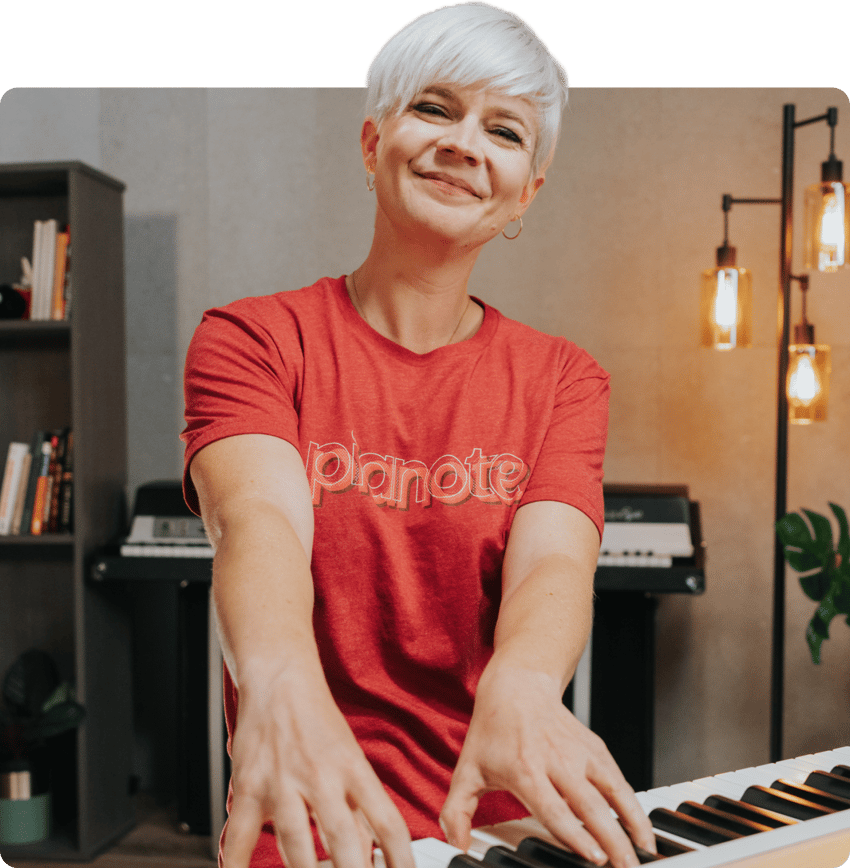

By signing up you’ll also receive our ongoing free lessons and special offers. Don’t worry, we value your privacy and you can unsubscribe at any time.
We use cookies for traffic data and advertising. Cookie Policy »